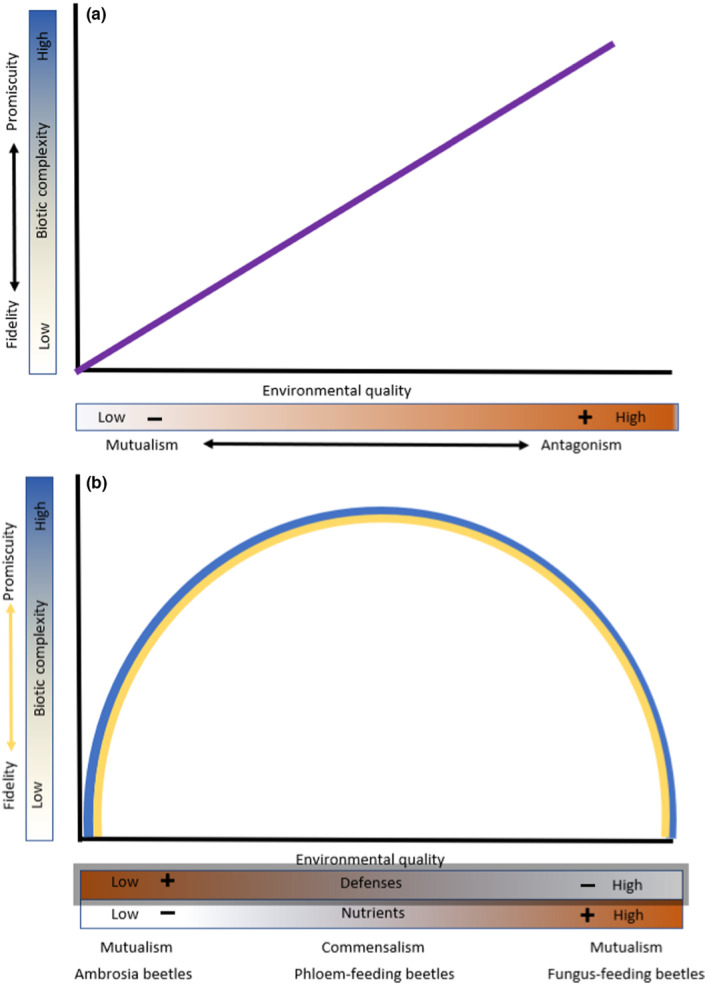FIGURE 3.

Models of mutualism. (a) In this model (adapted from Thrall et al., 2007), the purple line indicates the predicted outcome of host‐symbiont interactions where, as environmental quality and biotic complexity increase, there is a corresponding increase in generalism, a decrease in fidelity, and an increase in the potential for agonism. (b) In our conceptual model, environmental quality is not presented as a bidirectional force extending from low to high (as in b), but rather as distinct forces that can extend in opposing directions. This allows the inclusion of trade‐offs (increases in the quality of one trait are accompanied by decreases in another) which are common in nature and well‐known to influence interaction outcomes. With the Scolytinae and their fungi, tree nutrient quality, and tree defense produce increasingly strong tradeoffs as one moves away from the middle ground to either the right or left ends of the interaction spectrum. Here, these are shown as gradients from positive to negative (relative to effects on the host beetle). The middle ground (with moderate tree defense and moderate nutrient availability) is occupied by commensalisms (in this case, phloem‐feeding bark beetles). In (b), both the left (ambrosia beetles) and right (fungus‐feeding bark beetles) ends are mutualisms. For beetles to exploit these “ends,” the beetles must partner with high‐functioning fungi. However, because each end presents an opposite set of tradeoffs (either low nutrients (−) and low tree defense (+) or high tree defense (−) and high nutrients (+), the mutualisms that occupy these different ends have developed, and function in fundamentally different ways. Likewise, the mechanisms that lead to, and enforce, increased fidelity and specialization on each end differ. Importantly, Scolytinae‐fungus symbioses cannot be forced to fit the model in (a).
